The Davenport Brothers: The act that divided Sir Arthur Conan Doyle and Houdini
March 1865
Liverpool, England.
It stood in the center of the stage, at least six feet tall, perched on two-foot-tall supports, with a decorative crown of wood carved vines and fleur-de-lis. To approach it, one would likely feel an instant unease mixed with an odious sense of familiarity. Its three dark wooden doors held secrets that would shake the Spiritualist movement of the late 19th century to its core and forever divide the worldviews of two of the most prominent men of their time, Sir Arthur Conan Doyle and Harry Houdini.
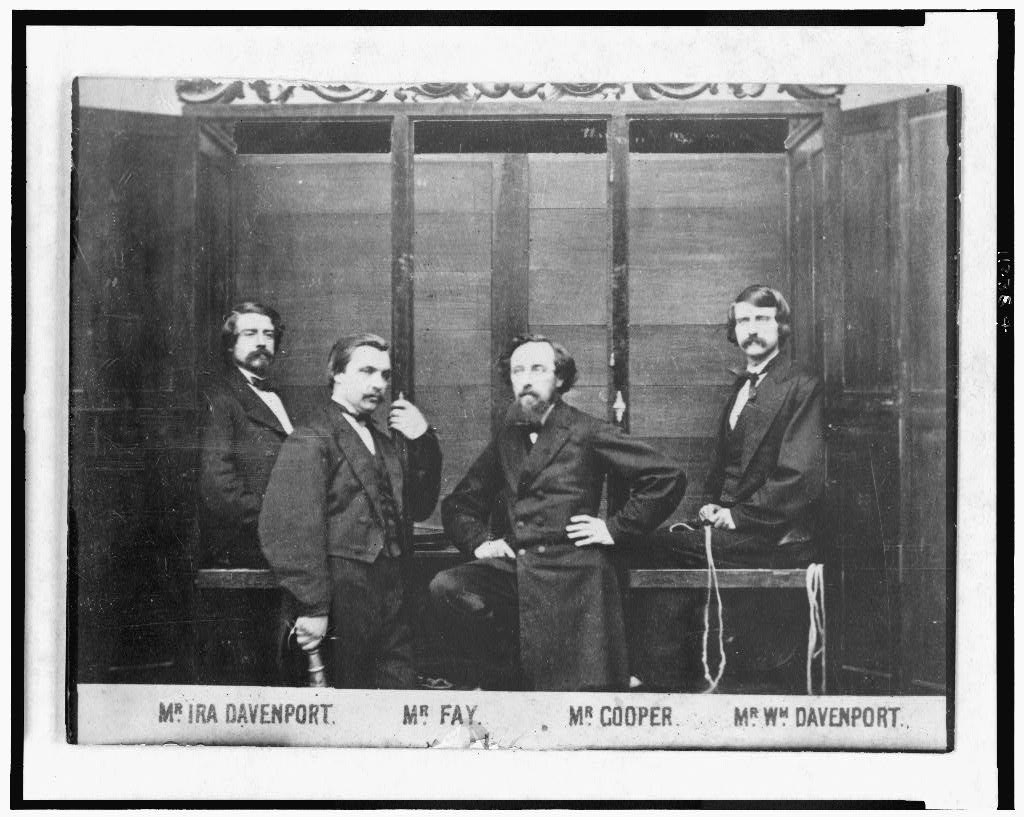
Inside on either end of the cabinet were two benches, one for each of the two Davenport brothers, William and Ira, to sit, with two holes bored into each seat. In the center, behind the middle door, hung bells, horns, and other musical instruments that would later play into their demonstration. The main focus, however, fell upon the ropes.

The ropes were what everyone whispered about in their small circles, in meeting rooms and parlors. The ropes were what every skeptic and magician tried and mostly failed to completely replicate and left throngs of true believers and skeptics in their wake.
The mechanics of their routine were tried and tested. They would first select audience members to serve as a committee to tie the ropes to their satisfaction. With their feet in front of them, they would have the rope looped around their legs, just below their knees, and finally wrapped around their ankles. The remaining rope was brought over to the other brother, and the same was done to him. Finally, shorter ropes were used to tie the brothers' wrists to the holes in their benches.
When the doors were closed, the brothers tied securely inside; the musical instruments began to play. Some were likewise tossed out of the little porthole window at the top of the middle door. The music was seemingly played by the "spirits" who accompanied the men inside. When the doors were once again opened, the Davenports would still be tied in their seated positions. Again, the doors were closed, and, in the final opening, the men would be free of their constraints.

Not everyone who witnessed such feats was convinced, and sometimes the spirits would not cooperate to the audience's satisfaction. That is why before the end of their Liverpool show, the cabinet would be destroyed by a mob of spectators, pieces of broken wood passed between them and ferreted away into the night as its owners fled for their lives. This show, however, was not the first to go wrong for the brothers. On many occasions, the audience turned violent, or the brothers were fined, imprisoned, or both.

The Davenports were natives of Buffalo in western New York, where the Spiritualist movement was born and thrived thanks to the help of the Fox Sisters in Hydesville. In 1854, family members stated that Ira began to levitate, and the boys claimed to communicate with various spirits. Within a year, a spirit guide named John King convinced William and Ira's father, a Buffalo City Police officer, to allow the boys to give public performances.
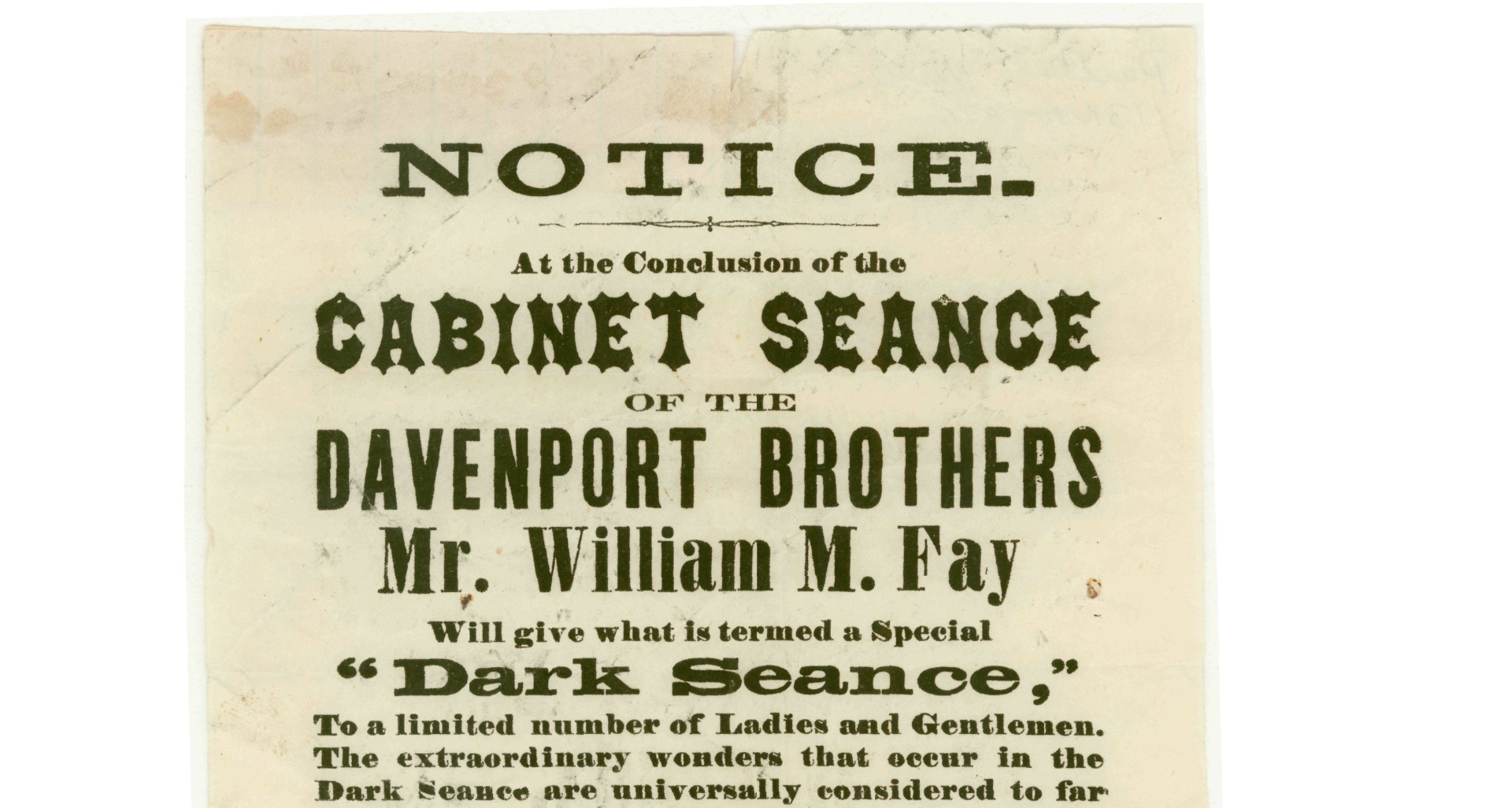
Their earliest shows revolved around spirit knocking or tapping. They later introduced musical instruments into their act which would play upon command and fly about the room. The Spirit cabinet was born of a dare at one of their New York shows. Audiences were often suspicious that members of the chosen committee were, in fact, confederates in league with the performers. One attendee suggested performing at this particular show while concealed in a box, like a wardrobe. The idea took off.
After a decade of touring the United States, and the Civil War creating unrest in their homeland, the brothers stated they were called to take their talents to Europe in 1864. It was there that their act began to crumble. At the Liverpool show, the selected committee included a pair of engineers who tied them up in a "Tom-fool’s knot" with which the brothers and apparently "the spirits" were unfamiliar. After a time, they were cut free. The resulting uproar of the crowd resulted in the cabinet's destruction.
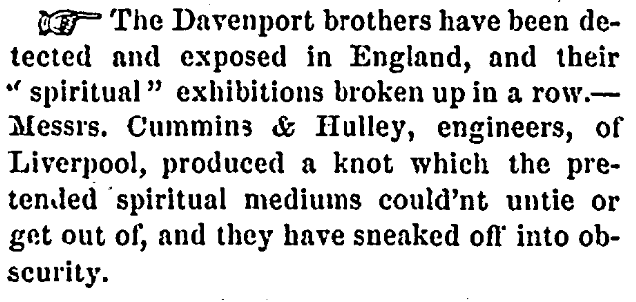
As a result of the Liverpool show, the brother left England and took to touring Paris and Germany. However, bad luck followed them to Paris, where again they were exposed so thoroughly the police had to intervene and compelled them to return the admission money in order to appease the crowd.

As their fame grew, many skeptics sought to disprove the brothers' abilities and their spiritualist beliefs.
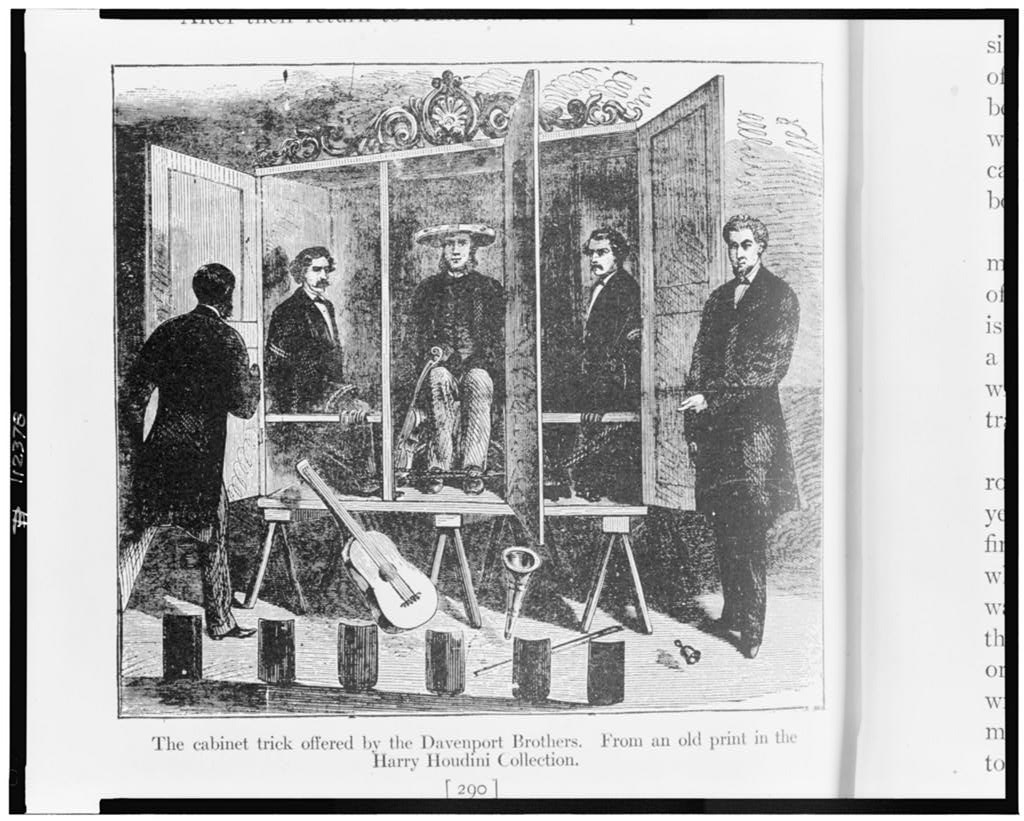
However, Sir Arthur Conan Doyle never faltered in his belief in their abilities. He stated in 1922, "It was found that in practice there was at that time greater religious freedom in the wild western towns of America than in such old centers as Liverpool." Doyle would often go on record defending the Davenports' abilities and character.
Doyle had long been interested in the spiritualist movement and the more positive tenets of the religion. Such ideals as the absence of Hell and a continued existence after death in which the living could speak with the dead, appealed to him. These thoughts and ideas were held by many in the aftermath of WWI when spiritualism saw a revival.
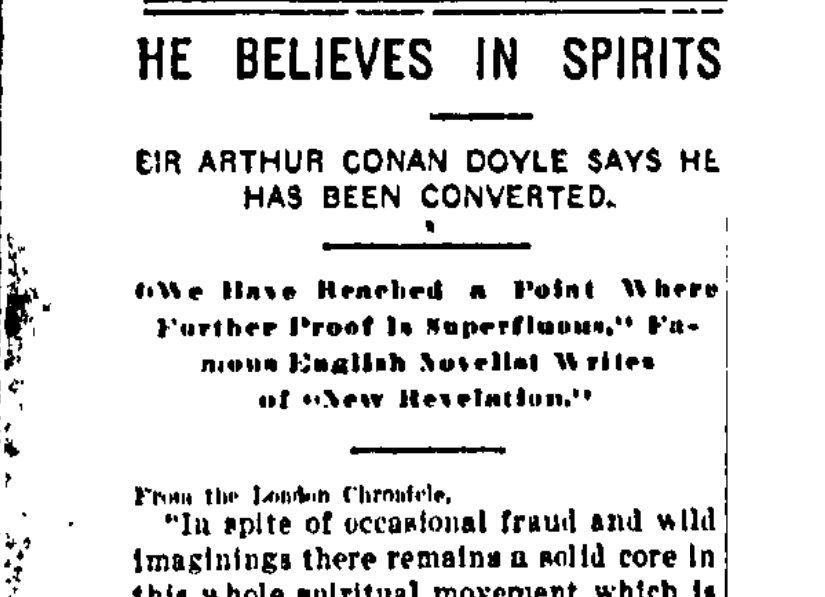
Doyle envisioned himself as a missionary for the Spiritualist religion and even traveled to the US to give lectures on the subject. His path and subsequent conversion to the Spiritualist cause began in the late 19th century, but was reinforced following his son's death shortly before the end of the Great War. Seeking out an opportunity to reconnect with the spirit of his son, he hired mediums and arranged a séance to be conducted. During one of these "interviews," he claims to have made contact in which his son had asked forgiveness for a disagreement they had before his death. Doyle believed the disagreement involved matters of spiritualism, something he and his son had not seen eye to eye on before his death.

At quite the opposite end of Doyle's beliefs sat the famous magician and escape artist Harry Houdini. Houdini had spent years making his rounds through various spiritualist circles, joining in séances and viewing miraculous feats with a well-trained skeptic’s eye. He had proven many a medium false and had his eyes set on the Davenport Brothers. It was not until much later he would see the opportunity to answer his questions.
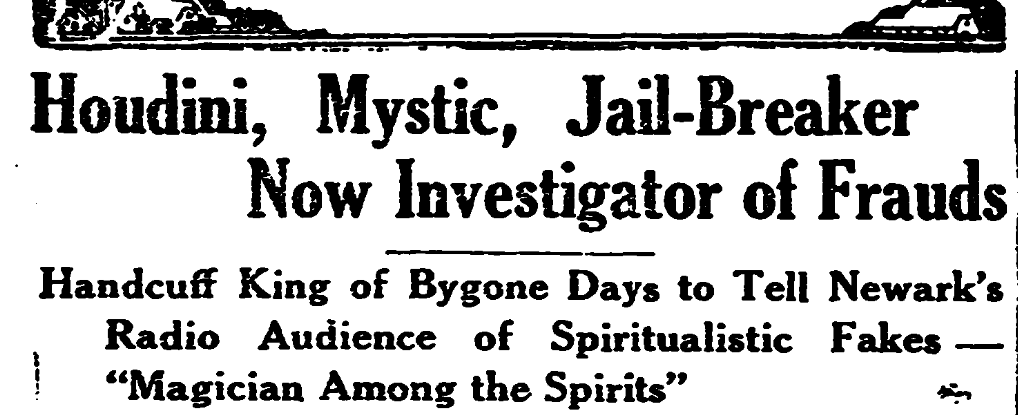
In the early 1920s, Houdini had set about to write a book, chronicling the origins of the spiritualist movement and unveiling the falsities and "humbugs" within. He admitted during his research that he had believed both William and Ira Davenport dead. In fact, that was only half true. William Davenport had died in 1876 in Australia. However, by a chance encounter, he had learned Ira was still alive and willing to talk.
According to Houdini, Ira wanted to come clean about what had transpired in his younger years. In an interview, he admitted to fakery and went so far as to show Houdini the trick that they had used to escape the ropes, one which had impressed the famous escape artist.
When asked about the trick he performed in many of his shows in which musical instruments flew around the room, he simply stated, "Strange how people imagine things in the dark!"

Despite the findings of Houdini's book released in 1924, entitled "A Magician Among the Spirits," Doyle stayed true to his beliefs that Houdini and the Davenport Brother’s abilities came from some supernatural place. He went on to compare Houdini to the Davenport Brothers stating, "I am quite sure that if the Davenport brothers had done their performance as if it were a conjuring trick, and had never told the honest and unpopular truth that it was of psychic origin, they would have amassed a comfortable fortune."
Likewise, Houdini said, "Conan Doyle is sincere but deluded." Despite these disagreements a close friendship developed during this period, and each spent considerable time trying to convert the other. Conan Doyle often arraigned meetings for Houdini with mediums, and likewise, Houdini went about disproving their spiritual abilities. Neither persuaded to budge.
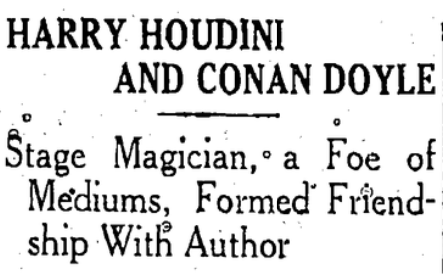
After Houdini died in 1926, Doyle approached his wife, Beatrice, with a message that Houdini would communicate with him soon. Those words, however, would never come, and four years later in 1930, Doyle himself would die.
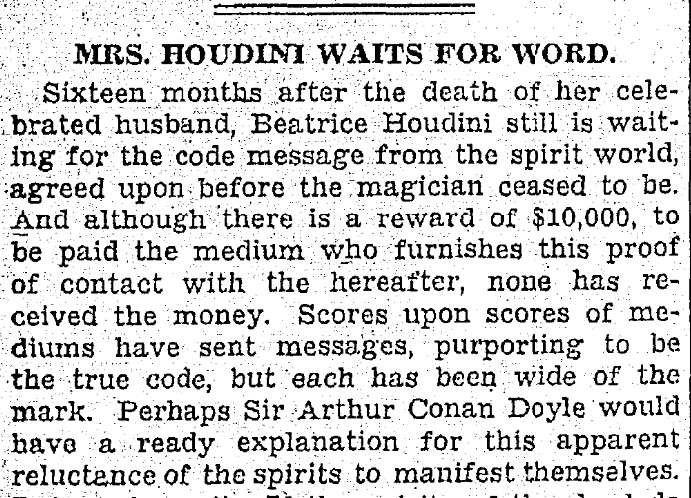
Shortly after Sir Arthur Conan Doyle's death, Nino Pecoraro came out in public to recant his psychic abilities in an attempt to make an honest living after "the ghost business" had hit a depression. Pecoraro had previously claimed responsibility for Doyle's initial conversion to the Spiritualist beliefs and had claimed to speak to Houdini after his death.

In 1951, London passed the Fraudulent Medium Act. The Act worked to criminalize people who pretended to act as spiritualist mediums for money or material profit. This act was later repealed in 2008.



